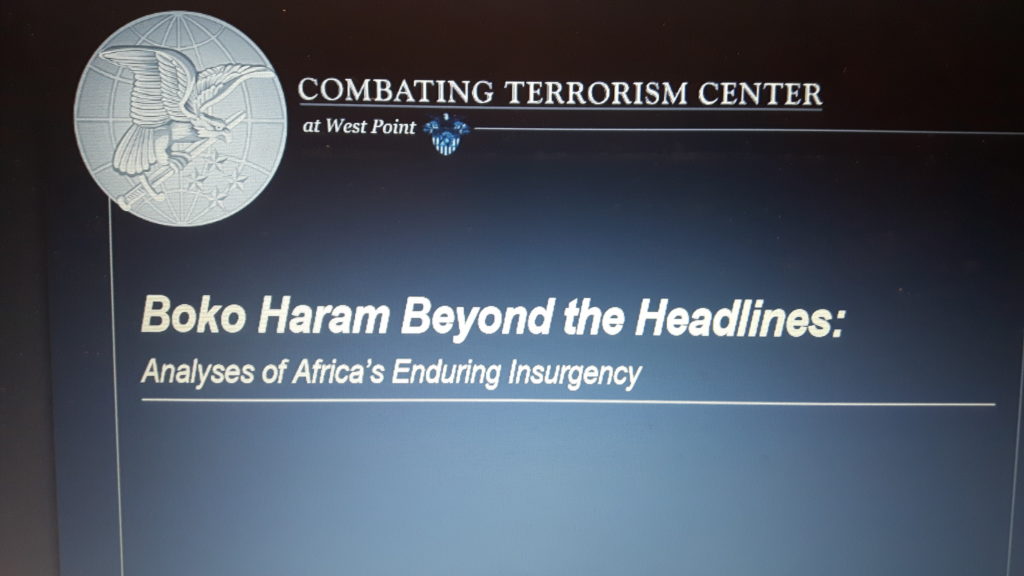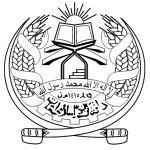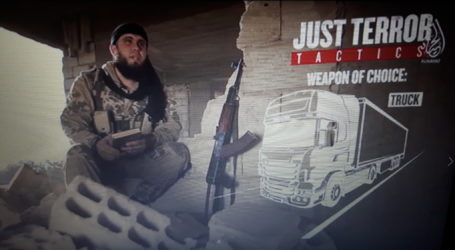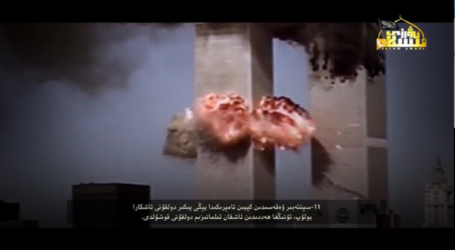Boko Haram Beyond the Headlines: Analyses of Africa’s Enduring Insurgency
Ten years ago when scholars and analysts wrote about security in Africa, northern Nigeria and the
Lake Chad region rarely registered in their assessments.
That may have been understandable: there was still no insurgency in the region, and the group popularly known as Boko Haram, which literally
means “Western education is sinful” in the Hausa language, was considered “moderate revivalists at
tempting to implement social change.”
The violent potential of Boko Haram was neither recognized
nor anticipated.
Yet the launch of Boko Haram’s insurgency in 2009 immediately forced observers and scholars to
reassess the threat it posed. Although some analysts denied at first that Boko Haram was receiving
training, funding, and weapons from other jihadi groups, officials and researchers in West Africa recognized early that Boko Haram had cultivated networks to al-Qa`ida in the Islamic Maghreb (AQIM)
and al-Shabaab.
There is evidence that these two groups, in particular, assisted Boko Haram in rapidly increasing its tactical sophistication, such as with suicide bombings, after 2009.
By 2016, Boko Haram was not only ranked the “most deadly” jihadi group in Africa, but also the
world.
On the verge of the 10-year anniversary of the group’s launch of its jihad—which will be in
2019—Boko Haram rivals and in some ways has surpassed its jihadi counterparts in AQIM in Algeria and the Sahel and al-Shabaab in Somalia and East Africa in tactical sophistication, lethality, and
territory under its control. Boko Haram’s learning curve has indisputably been fast.
The loss of human life as a result of the insurgency is estimated at approximately 30,000 people.
Boko Haram has devastated much of the countryside in northeastern Nigeria and neighboring regions of
Cameroon, Chad, and Niger. Internally Displaced Persons (IDP) camps are scattered across the border
regions of these countries, and the task of returning IDPs to their homes has been as difficult as it has
been dangerous.
Attacks and abuses that Nigerians would have never thought possible in the country have become
commonplace: girls as suicide bombers, the reinstitution of “slavery,” mass immolation of students
in their dormitories, among others. In this sense, Boko Haram has also tested the limits of what is
permissible in jihadi ideology.
Nigeria, once considered the Giant of Africa, has seen its influence in West Africa reduced because of
Robert L. Feldman, “The Root Causes of Terrorism: Why Parts of Africa Might Never Be at Peace,”
Defense & Security Analysis
Boko Haram’s formal name since 2009 has been Jama’atu Ahlus-Sunnah Lidda’Awati Wal Jihad, or Sunni Muslim Group for Preaching and Jihad.
Alexander Thurston, for example, wrote that links between Boko Haram and AQIM were “not serious” and that it was “more likely”that double agents in the Nigerian Army trained Boko Haram members than AQIM even though such evidence did not exist. In contrast, Nigerian journalists with access to Boko Haram members, such as Ahmed Salkida, and other analysts and officials in West Africa and at the United Nations increasingly expressed concern about Boko Haram training in the Sahel and Somalia starting in 2011.
Not only has the government underestimated Boko Haram, and lost or been denied
access to territory by the insurgents, but Nigeria’s ability to serve as a security guarantor in the region
has deteriorated. Nigeria, for example, played a leading role in peacekeeping in Liberia in the 1990s
and 2000s but can no longer deploy large numbers of forces elsewhere in the region because of the
need for troops to combat Boko Haram at home.
Indeed, one of al-Qa`ida’s goals in supporting Boko
Haram from as early as 2003 was to prevent Nigeria from playing a regional leadership role on behalf
of the “Jewish-Crusader alliance.”
In this regard, al-Qa`ida has apparently succeeded.
Despite President Muhammadu Buhari’s efforts to improve the army’s efficiency since coming into
office in 2015, the insurgency has long exposed problems in the Nigerian government and security
apparatus. There have been reports of an under-resourced army suffering from low morale.
There have also been reports of Boko Haram commanders arrested in governors’ lodges and of other insurgent associations with politicians.
The key areas where Boko Haram operates have a rising youth
population facing high rates of unemployment and low literacy rates, and this is only worsened by the
growing ecological crisis of a shrinking Lake Chad and expanding desertification. None of this makes
countering the insurgency any easier.
While Nigerian Muslim leaders are keen to distance themselves from the insurgents, both Boko Haram and the Islamic State-affiliated faction Islamic State in West Africa Province (ISWAP) are adamant that they abide by salafi principles and the example of the Prophet and his companions.
This
has forced Nigerian salafis into a difficult position: on the one hand, they are accused of supporting
or sympathizing with Boko Haram because their theological reference points resemble those of Boko
Haram, while on the other hand, their work to counter Boko Haram plays into Boko Haram’s accusations that they are “palace lackeys” of the Nigerian government who backtracked on the salafi-jihadi
project in Nigeria that they initially supported.
The most vocal critics of Boko Haram from the Nigerian salafi community have been prime targets for Boko Haram assassinations, which has made it all the more difficult for salafis to challenge the group’s ideology in the public sphere.
The Boko Haram and ISWAP ideological campaign is no longer limited to the physical marketplace
of ideas. Like the “mainstream” Nigerian salafis, the group’s factions have also embraced Facebook,
Twitter, and especially Telegram as a means to release their statements and propaganda. Social media
allows the various factions to not only share their narratives and objectives to potential recruits but
also to debate each other on issues of ideology and strategy.
Both Boko Haram and ISWAP have used
videos to boast of battlefield successes, refute government claims, and engage in psychological operations against the Nigerian government and people, a tactic particularly evident in the videos released
of the Chibok schoolgirls, which succeeded in drawing global attention to Boko Haram leader Abubakr
But what are Boko Haram’s goals and objectives?
The leaders have always claimed that they want to
govern territory under sharia law and fully eliminate the secular, democratic, and ‘un-Islamic’ Nigerian
political and educational systems. This includes targeting Western education because of the co-educational mixing of the sexes, the promotion of the English language, and the teachings of Darwinian
theories of evolution that come along with it. The factions and leaders have at times sought to create
their own Islamic state in Nigeria, while at other times they have sought to identify with other Islamic
states and groups, such as the Taliban in 2003 or, since 2015, the Islamic State.
There are ongoing debates about whether Boko Haram and ISWAP are on the rise or decline and
whether the insurgents are winning or losing. In March 2015 when Boko Haram pledged its loyalty
to the Islamic State, the Nigerian government was launching a large-scale counterinsurgency offensive against the insurgents and was confident it would defeat them once and for all. Some analysts
mistakenly saw the pledge to the Islamic State as a sign of the group’s weakness and an attempt to
deflect attention from the group’s battlefield losses.
But the offensive against Boko Haram did not
fully dislodge the insurgents from their territories nor did it undermine their loyalty to the Islamic
State, which the group first announced in 2014, was formalized in 2015 and has maintained in 2018
even despite the Islamic State’s territorial losses in Syria and Iraq.
The Nigerian government has often claimed that Boko Haram is desperate or on its ‘last legs,’ or, more
recently, that its violence was “the last kicks of a dying horse.”
Yet ongoing attacks including suicide
bombings, abductions, and raids on military convoys do not suggest the movement is demoralized,
lacking finances, or near its end. Boko Haram has also received several million dollars from the exchanges for the Chibok schoolgirls in 2016 and 2017 and ransoms from other kidnappings.
Reports from the United Nations suggest that both
factions control territory where they can implement their version of sharia law and deny the Nigerian
government access.
One of the impacts of Shekau’s 2015 pledge of loyalty to the Islamic State has been on the internal
factions of the group. As the longstanding leader and only public face of Boko Haram since 2009,
Shekau was appointed by the Islamic State in March 2015 as the group’s leader under the new name,
ISWAP. However, in August 2016, the Islamic State demoted Shekau in favor of Abu Musab al-Barnawi (alias Habib Yusuf ). The internal factionalization of the group was said to be another sign of the
group’s decline, but, if anything, the continuation of ISWAP under al-Barnawi and a revived Boko
Haram under the leadership of Shekau has diversified—and not eliminated—the threat as the factions
compete with each other.
BOKO HARAM BEYOND THE HEADLINES
Moreover, even despite Nigerian government claims of Shekau’s death, he remains as alive and volatile
as ever, taunting Nigerian and world leaders alike. Meanwhile, al-Barnawi and his loyalists present a
more ‘hearts and minds’ tone as compared to Shekau, especially toward the Muslim civilian population, a stance that makes ISWAP somewhat more tolerable to civilians than Boko Haram, but thereforemore dangerous in the long-run.
Surrender is not an option for either Shekau and his loyalists or
al-Barnawi. For example, Ahmed Salkida, the only journalist who has met Shekau face-to-face since
the launch of the insurgency, wrote in early 2018 that:
“Shekau has groomed men and women in their thousands that even he can no longer keep in
line; many within the network see him as an obstacle to what they would have accomplished if
he was gone long ago. No doubt, he remains the face of the insurgency, but no longer the driver
of it … If we consider one of Shekau’s lines in his last video literally, that he is tired of being
around and would prefer death than this life, as a sign of complete defeat, then we are still VERY
ignorant of the group’s corrosive ideology, which is, ‘to kill or be killed.’”
Sources close to ISWAP, meanwhile, claim that al-Barnawi must report to the Islamic State, which
means that there is a no possibility for an end to the insurgency via negotiations with the group.
One reality of the insurgency is that its evolution has never been easy to predict. The extrajudicial
killing of Muhammad Yusuf—al-Barnawi’s father—was one factor in the sudden and unanticipated
rise of the insurgency in 2009, for example. If, or when, Shekau is killed, it will certainly be celebrated by many in Nigeria. But some of his loyalists may join ISWAP under the lead of al-Barnawi and
strengthen it. Other members of Shekau’s faction may even become more unrestrained in their use of
violence, thus exacerbating the harm to civilians.
In a conflict that has no easy answers and no solutions in sight, Boko Haram is already and will remain one of Africa’s enduring insurgencies. In order to better understand Boko Haram now and in
the future, this report challenges some key misconceptions about the insurgency and provides new
analyses and insights based on many exclusive primary source materials and datasets. It explores six
areas that are increasingly important but under-researched about Boko Haram and ISWAP: ideology,
gender, leadership, counterinsurgency, regional dynamics, and terrorist networks.
On ideology, Abdulbasit Kassim argues that:
•
By preaching in support of suicide bombings and al-Qa`ida, “mainstream” Nigerian salafi preachers laid the ideological framework that Boko Haram later promoted when it launched the insurgency in 2009.
•
The Islamic State has had some level of intervention in the management of the internal civil war
between Boko Haram and ISWAP.
•
Rigidity in ideology, particularly over the issue of labeling Muslims as infidels and the ethics of
war, has been responsible for the factional infighting between Boko Haram and ISWAP.
On gender, Elizabeth Pearson argues that:
•
The Islamic State’s strict prohibition on female violence was geared toward its ‘state’ project, with
a strict division of male and female roles (violent/non-violent) in order to recruit both men and
women, unify its members, and regulate their behavior.
BOKO HARAM BEYOND THE HEADLINES
recruitment objectives, Boko Haram has been freer to embrace female violence.
•
Boko Haram’s use of female ‘suicide’ bombing is not only unprecedented in scale, but also in the
absence of symbolic meaning accorded to ‘attackers’ or consistent public theological justification.
•
Boko Haram and the Islamic State engage in gender-based violence in the pursuit of tactical goals,
but this changes to suit their aims and context.
On leadership, Atta Barkindo argues that:
•
The Nigerian government’s inability to defeat Boko Haram is the result of a misplaced security
policy that dismisses Shekau as ignorant and clueless.
•
Most policymakers, analysts, and academics do not understand the socio-cultural, historical, and
linguistic antecedents of the environment within which Shekau operates and therefore struggle to
understand why he has been able to be the Boko Haram leader since the start of the insurgency.
•
Shekau’s ability to strategically build networks and enter into and leave alliances when necessary
is a reason for his success.
On counterinsurgency, Idayat Hassan and Zacharias Pieri argue that:
•
The familiarity of anti-Boko Haram vigilantes in the Civilian JTF (CJTF) with local languages and
the local terrain in northeastern Nigeria makes them uniquely capable of combating Boko Haram
at a grassroots level.
•
Fears have arisen over the possibility that the CJTF will ‘turn bad’ as so often happens with civil
–
ian-based armed groups (CBAGs).
•
The Nigerian government has to address concerns of CJTF members regarding their future em
–
ployment, education, and training and provide them a legitimate path into the armed forces.
Failure to act will only serve to further delegitimize the state.
On regional dynamics, Omar Mahmoud argues that:
•
Boko Haram’s geographic operations and alliances have increasingly expanded beyond Nigeria’s
borders over time.
•
Despite Boko Haram’s evolution, Nigeria continues to remain the locus of the group’s operations.
•
It is important to examine specific aspects of Boko Haram and ISWAP when determining the
geographic trajectory of the insurgency and considering policy responses.
On terrorist networks, Jacob Zenn argues that:
•
Al-Qa`ida is no longer operationally active in Nigeria but is still interested in carrying out attacks
in Nigeria or allying with some jihadi factions in Nigeria in the future.
•
Although both Boko Haram and ISWAP are loyal to the Islamic State, with only the latter recognized as an Islamic State ‘province,’ some fighters could question that loyalty if Abubakr al-Baghdadi dies.
•
In the long-term, the AQIM sub-groups in Mali will connect with ISWAP or Boko Haram defec
tors, very possibly from the Fulani ethnic group, and reestablish a faction to operate in Nigeria
that will carry out attacks on foreign interests.
It is hoped that these analyses of ‘Africa’s enduring insurgency’ will be useful to counterterrorism prac
titioners, humanitarian organizations, and academia and will assist in understanding and, ultimately,
mitigating and resolving the conflict.





